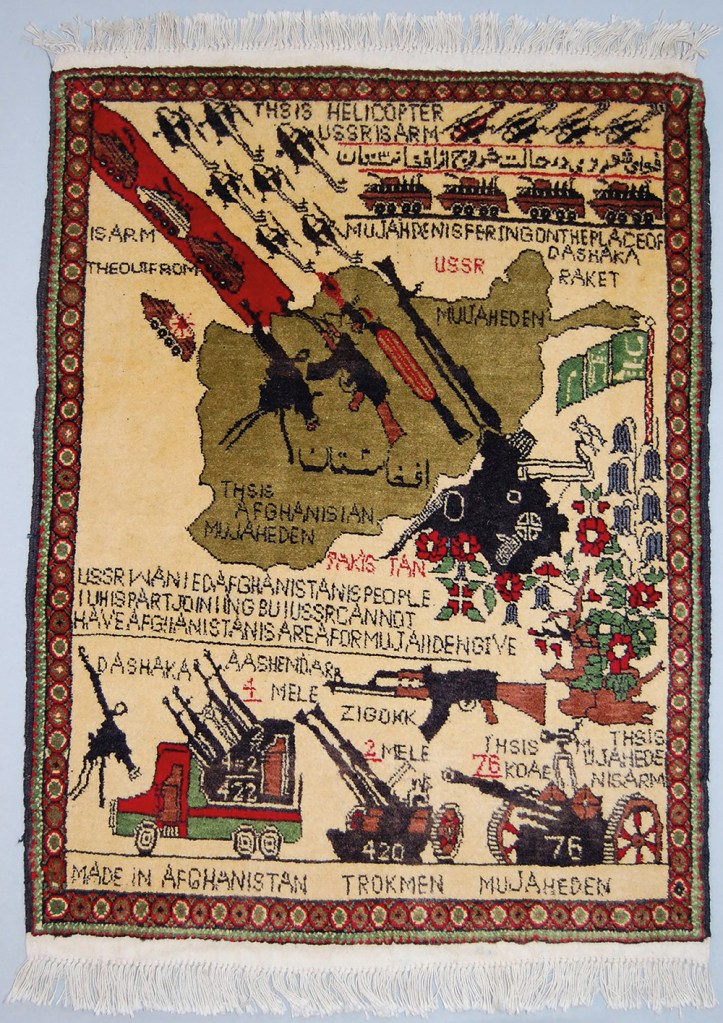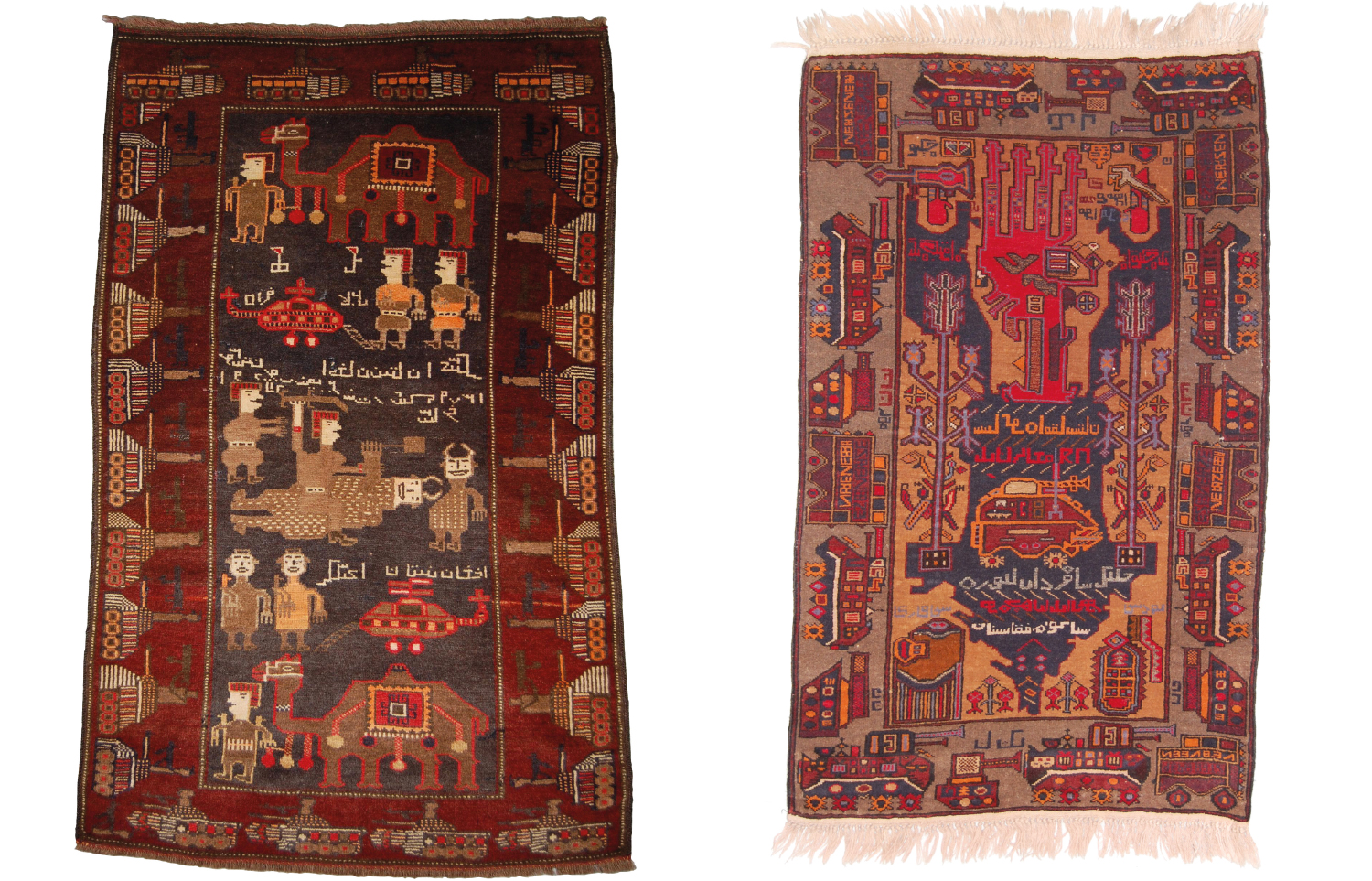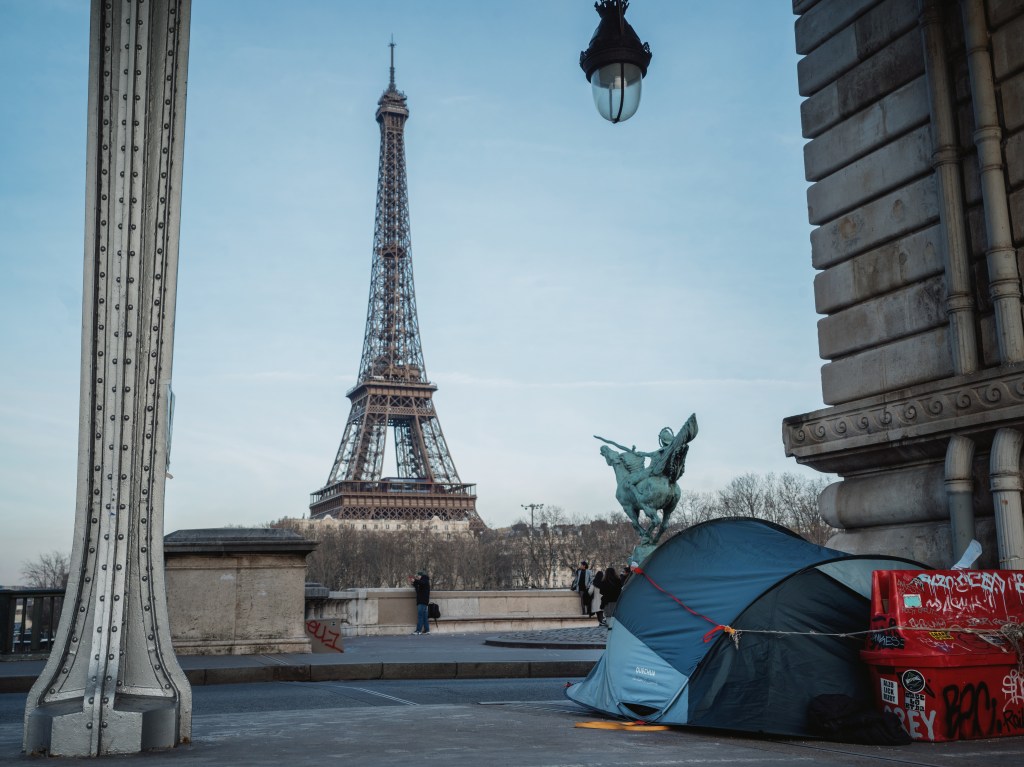Decades after its inclusion in the Hippie Trail, Afghanistan is again open to tourism, according to the Taliban’s spokesman Zabihullah Mujahid. It is perhaps a source of regret for the group that the 6th-century Buddhas of Bamiyan are missing in action. They were blown up in 2001 either, depending on who you ask, because of Islam’s strict beliefs on anti-idolatry or to punish the West for offering money to preserve them rather than give aid to starving children.
The war rugs, depicting camels and flowers alongside rocket launchers, are striking and jarring
While the country continues to export fruit, nuts and insect resins – opium production was massively scaled back by the Taliban – Afghanistan is justly famous for its woven rugs. War rugs are a curiosity within this craft, fusing traditional weaving with military motifs: bombs, tanks, grenades, helicopters and, more recently, drones. They’re not a new phenomenon. The rugs began appearing after the Soviet invasion of Afghanistan in 1979, which precipitated the protracted, decade-long conflict between the US-backed Mujahideen and the communists that saw millions of Afghans killed and displaced.
In a tiny corner of a large gallery in the British Museum is a perfectly formed display of several Afghan war rugs, accompanied by, among other things, the tools of the rug trade, mosaic fragments, plus a medal and chapan cloak that once belonged to former president Hamid Karzai. The rich influence of Persian poetry, art and myth, such as Firdausi’s Shahnama (‘Book of Kings’), on this land-locked and ethnically diverse country, is noted.
The war rugs, depicting camels and flowers (including opium poppies), alongside motorised vehicles and rocket launchers, are striking, jarring and alluring. One rug depicts Soviet tanks encountering an anti-aircraft gun which in turn resembles a hand. These recall Shia Ashura processions commemorating the martyrdom of Imam Husayn in ad 680. Another, the 2001 airstrike on the Tora Bora caves, depicts jet planes alongside UK and USA flags. There are smaller mats and coasters featuring pixellated guns, helicopters and grenades.
It is hard not to see the war rugs as works of art that belong more in a contemporary gallery than a museum – not least because we are by now well-trained to appreciate the marrying of traditional craft with modern concerns.
I was reminded of American artist Martha Rosler’s Vietnam photomontage war series ‘Bringing the War Home’, in which she splices scenes from Life and House Beautiful magazines so that housewives gaze out on to scenes of violent destruction. The Afghan war rugs, from the other side of geopolitics, depict multiple wars that are already ‘home’; they bring the familial and local to meet the conflict.
What, after all, is more domestic than a rug? And what, in a continual war zone, is more everyday than helicopters and other military equipment? The exhibition is careful to frame the rugs not only in the context of an ancient tradition but also in relation to a more recent type of object: the souvenir. The show points out that early rugs were bought by soldiers fighting in Afghanistan, and by curious journalists and humanitarian workers. Later, collectors became interested and larger rugs were produced to order to meet demand.
The symbolic value of these war rugs was ‘probably not intended’, yet today Afghan war rugs are produced with the global market in mind. There are indeed many for sale on eBay which feature 9/11 imagery, machine guns, poppies, horses and inhuman-looking drones. The show comments that while the mass-produced war rugs have been criticised for their inauthenticity and exploitative manufacturing methods they have provided weavers with income in dire times.

Today, war rugs are produced with the global market in mind. There are many for sale depicting 9/11
Last year, Pakistan deported more than a million undocumented Afghan refugees, many of whom returned to the country to weave. Many of the weavers are originally women from nomadic and semi-nomadic pastoral groups, such as the Turkmen and the Baluch. The rugs they make – in cramped workshops – account for 45 per cent of the country’s exports.
There are a whole series of depressing historical ironies manifest in the production and sale of the war rugs in a country which has, according to reports, recently banned the publishing of images of all living things, and seeks to prevent women from hearing other women’s voices.
The British Museum’s micro-exhibition is an excellent way to understand the troubled history – and present – of this most complex of countries. Sad and beautiful all at once, the war rugs are a reminder that violence at all times haunts the places we hope will be the most serene: Oh, what a tangled web we weave.








Comments